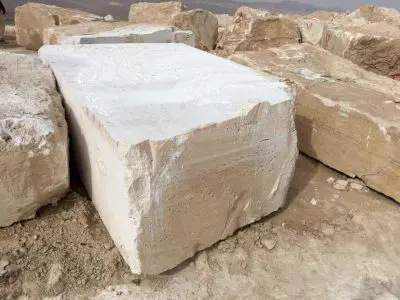One of the good properties of this stone is its thermal insulation and sound insulation, which the cavities inside the stone have created this property, and another advantage of the cavities in travertine is the increase in the strength of the installed stone, which penetrates the cement

Travertine continues to play a significant role in today's luxury architecture and decoration. It is a form of limestone that has been used as a Building material for centuries, and its timeless beauty, durability, and versatility make it a popular choice in luxury projects.In architecture, Travertine is often used for exterior cladding, creating stunning facades that exude elegance and sophistication. Its natural earthy tones, ranging from creamy whites and beiges to warm browns, add a sense of warmth and luxury to buildings. Travertine can be honed, polished, or left in its natural state, offering a range of aesthetic options to architects and designers.
Travertine comes in a variety of finishes, including polished, honed, brushed, tumbled, and chiseled. This versatility allows it to be used in a wide range of design styles, from modern and contemporary to traditional and rustic. It can be seamlessly incorporated into different architectural elements such as flooring, walls, stairs, columns, fireplaces, and even outdoor spaces like patios and pool decks. While travertine is commonly associated with warm earthy tones, it is available in various colors and shades. In addition to the classic beige and cream hues, you can find travertine in light ivories, golden tones, walnut browns, and even silver-gray varieties. This wide range of colors enables designers to select the most suitable option to complement their design vision and create the desired ambience.
Travertine is also used extensively in interior design, particularly in spaces where a touch of luxury is desired. It is commonly used for flooring, wall coverings, and countertops in high-end residential and commercial projects. The unique texture and veining patterns found in travertine create visual interest and give spaces a distinct character. From contemporary minimalist designs to more traditional or rustic styles, travertine can be adapted to various design aesthetics. One of the reasons travertine is favored in luxury architecture and decoration is its durability. It is a dense and strong material that can withstand heavy foot traffic and resist wear and tear over time. This makes it suitable for high-traffic areas such as grand entrances, lobbies, and luxury retail spaces.
Moreover, travertine is considered a sustainable choice in architecture and design. It is a Natural stone that is widely available, and its extraction and production processes have become more environmentally friendly over the years. Additionally, travertine has excellent thermal properties, helping to regulate indoor temperatures and reduce energy consumption.
Luxurious buildings with impressive Stone facades are among the most beautiful features of the city that dazzle the eyes of every viewer. Among these, travertine is the best choice for these buildings due to its variety of colors and extraordinary pattern. But to know what travertine is and get to know more about this beautiful gift of nature to our homes. If its porosity is less and its color is lighter, it is considered as a better quality stone. The advantages of travertine stone are good resistance to cold and heat, adhesion to mortar and also very reasonable price. Of course, because the stone is sedimentary, very cold weather can lead to its crushing.
Travertine exhibits a unique texture with natural pits and voids created by water erosion, giving it a distinctive character. These voids can be left unfilled for a more rustic and organic appearance or filled with Resin or grout for a smoother surface. The veining patterns found in travertine can vary from subtle to bold, adding visual interest and creating a sense of movement in architectural and decorative applications. Travertine is often chosen for its ability to seamlessly connect indoor and outdoor spaces. By using the same travertine material in both areas, such as extending a travertine floor from an interior space to a patio, you can create a harmonious flow and a sense of continuity. This integration is particularly desirable in luxury homes, resorts, and high-end hospitality projects, where indoor-outdoor living and entertainment spaces are valued.
Travertine is a durable material that can withstand heavy use and retain its beauty for decades. It is relatively easy to maintain, requiring regular cleaning and occasional sealing to protect against stains and moisture. With proper care, travertine can maintain its luxurious appearance and stand the test of time, making it a reliable choice for long-term investments in architecture and decoration. As a natural stone, travertine offers inherent sustainability benefits. It is a non-toxic and recyclable material, and its production processes have become more environmentally friendly, focusing on reducing waste and energy consumption. Choosing travertine as a building material aligns with the growing emphasis on sustainable design practices and the use of natural materials that contribute to healthier and more eco-conscious environments.
One of the good properties of this stone is its thermal insulation and sound insulation, which the cavities inside the stone have created this property, and another advantage of the cavities in travertine is the increase in the strength of the installed stone, which penetrates the cement. Inside these cavities, the adhesion of the Rock to the wall increases. The porosity of the travertine rock is due to the space occupied by the gases in the hot water, which is a source of sedimentation that prevents the formation of a compacted rock mass.





